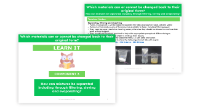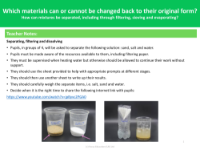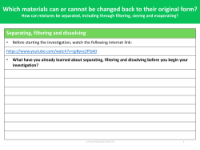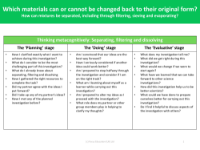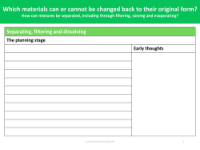How can mixtures be separated including through filtering, sieving and evaporating? - Presentation
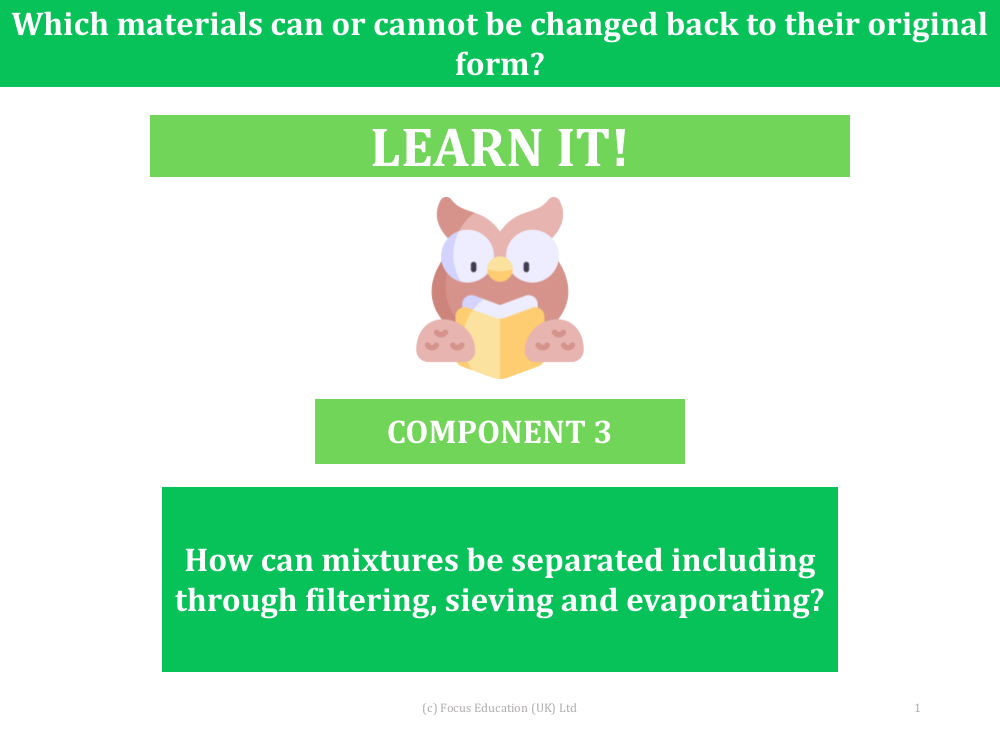
Science Resource Description
Separating mixtures is a fundamental aspect of science education, and students can learn this through practical activities that involve filtering, sieving, and evaporating. In a classroom setting, pupils work in groups to separate a mixture of sand, salt, and water. They are provided with resources such as filter paper and are instructed on safety, particularly when heating water. The practical task requires students to follow step-by-step prompts, weigh the separated components, and document their findings. This hands-on experience teaches them not only the techniques of separation but also the concept of reversible and irreversible changes, as they consider which materials can be returned to their original form after the process.
The lesson plan encourages a metacognitive approach, prompting students to think about their learning process during the 'Planning', 'Doing', and 'Evaluative' stages of the investigation. Pupils are encouraged to clarify their goals, gather the necessary resources, and remain open to modifying their approach based on their findings and group discussions. The evaluative stage is crucial, as it allows them to reflect on what worked well, what could be improved, and how the investigation can enhance their understanding of scientific methods. This reflective practice not only reinforces the separation techniques but also helps develop critical thinking and problem-solving skills, which are essential for budding scientists.
